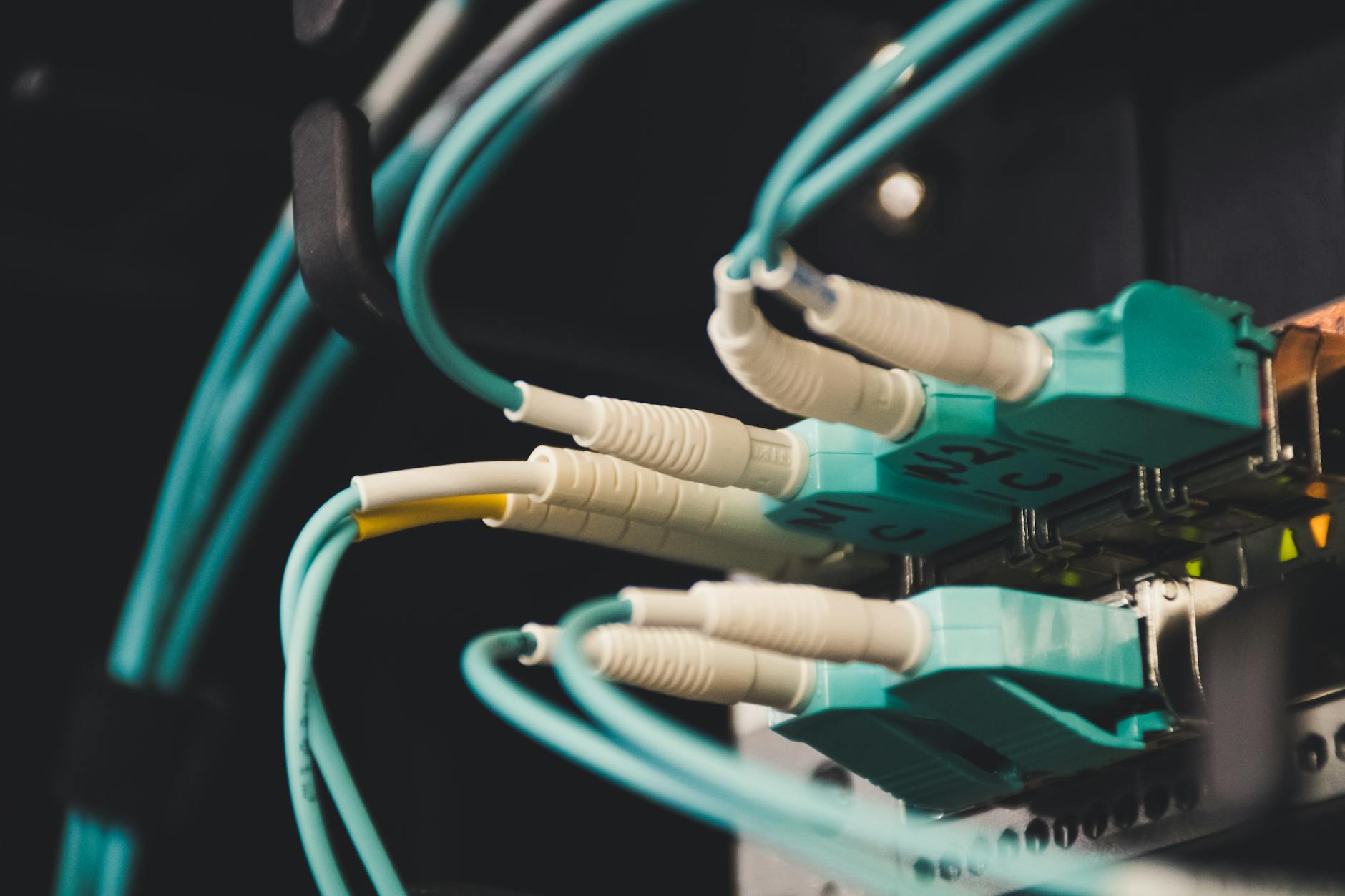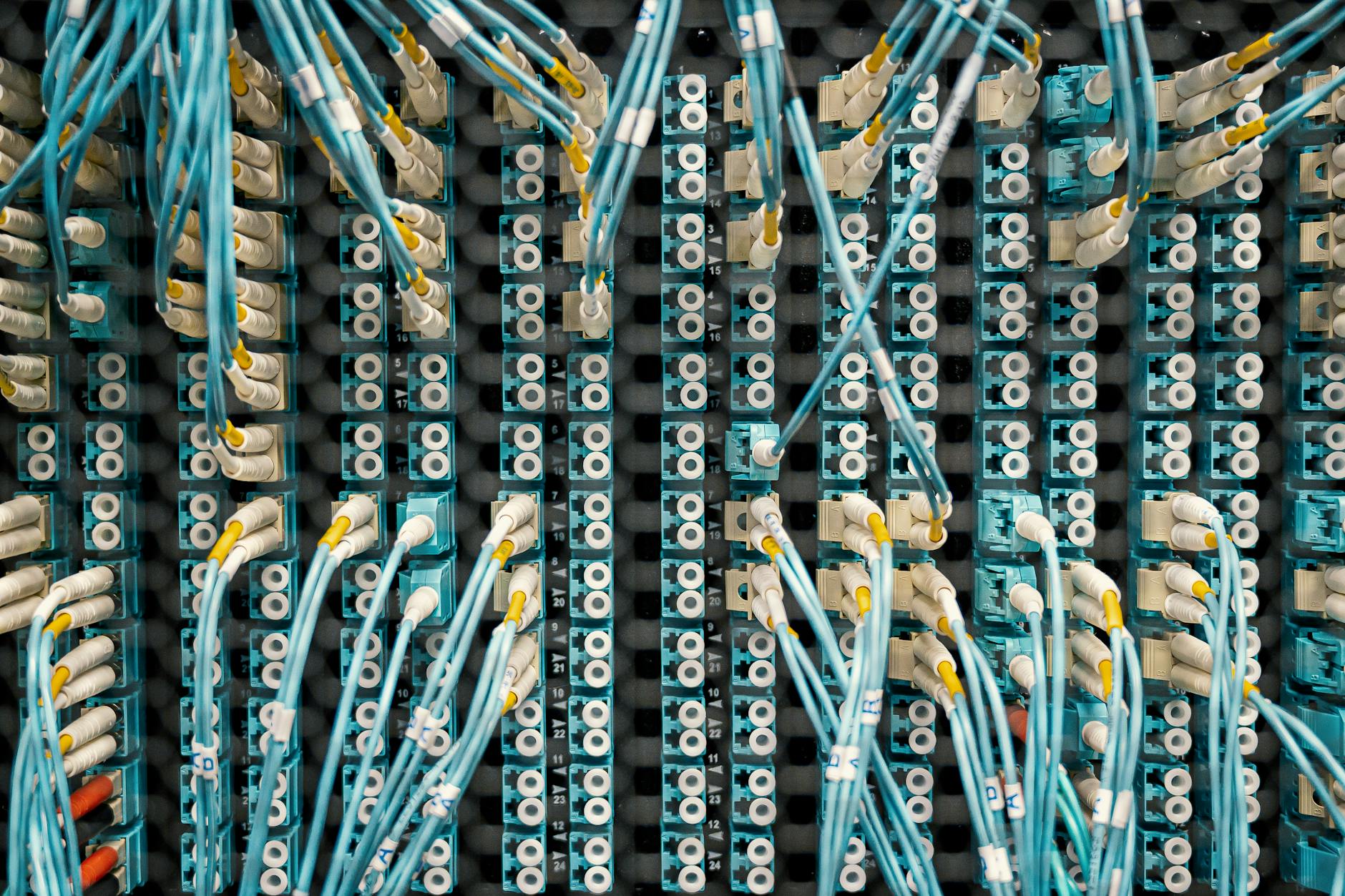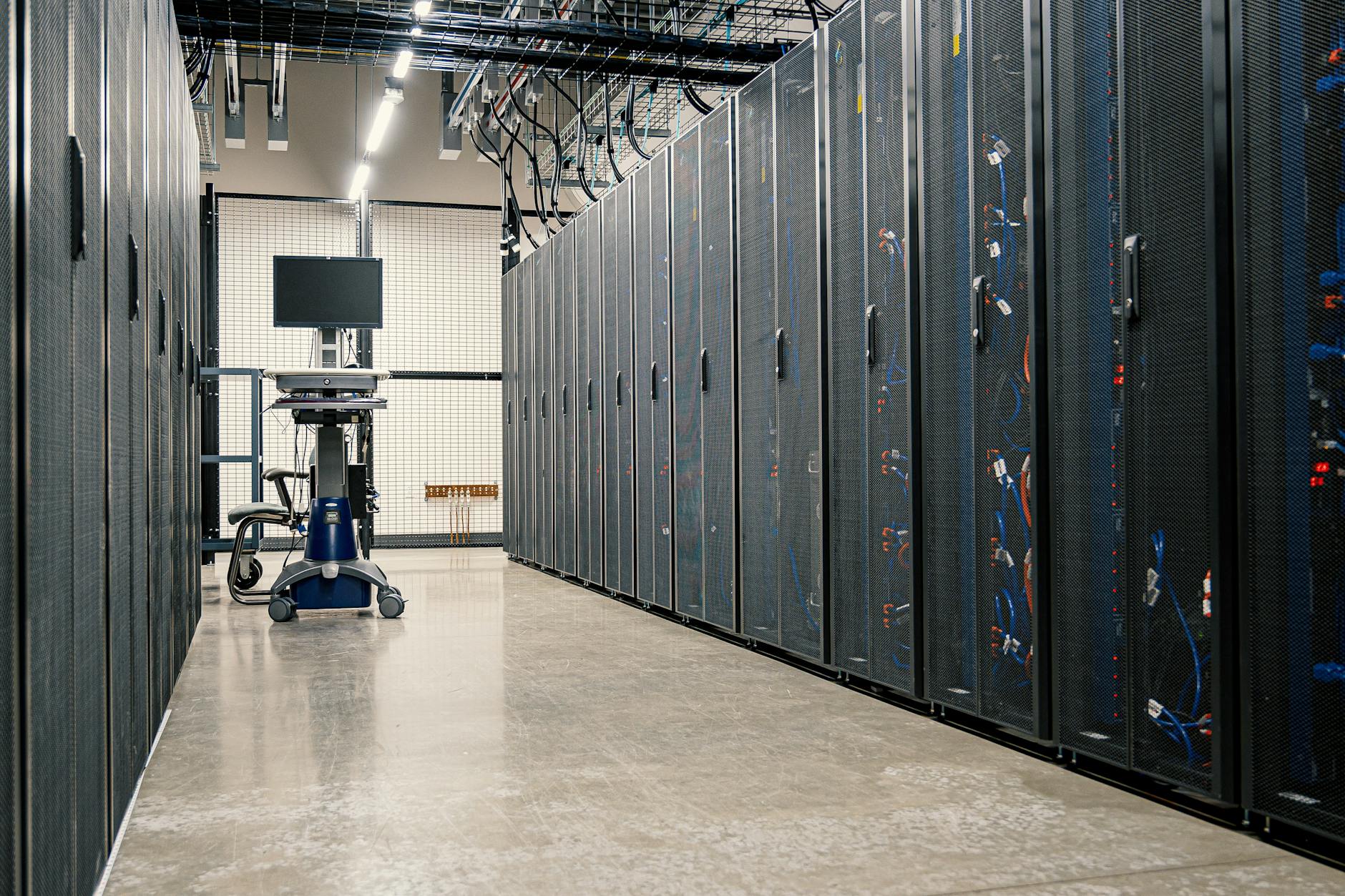Analyzing IPv6 Infrastructure Growth in Asia
IPv6 Adoption in Asian Countries
IPv6 is picking up steam in Asia, and it’s more than just a tag-along trend. Thanks to some big pushes from major service providers and government efforts, the IPv6 scene is buzzing. Here, we’re taking a peek at the countries leading the charge and how Reliance Jio has turned India’s IPv6 game on its head.
Leading Countries in IPv6 Adoption
Asian countries are hopping onto the IPv6 train with gusto. Check out who’s making waves:
| Country | IPv6 Adoption Rate |
|---|---|
| India | 78% |
| China | 42% |
| Japan | 30% |
| Malaysia | 25% |
-
India: Topping the charts, India sees over 78% of internet traffic cruising through IPv6. Why? Hats off to Reliance Jio. Their networks have put India on the map (APNIC Blog).
-
China: The big players in China mean business. With plans set early on to get millions hooked on IPv6, they’re surging ahead, especially on mobile networks.
-
Japan: It might be a slow burn, but Japan’s commitment is yielding results. With tech upgrades rolling out, IPv6 is steadily rising across the nation.
-
Malaysia: Malaysia’s making moves by upping its internet game, pushing its rate to 25%. Watch this space!
For more on IPv6 adoption in Asia, dive into our related stories.
Impact of Reliance Jio on India’s IPv6 Growth
Reliance Jio? They’ve been the MVP for India’s switch to IPv6. Since day one, they’ve gone all-in on IPv6-only networks. They weren’t just twiddling their thumbs – by October 2017, they had a whopping 130 million customers, shaking up India’s digital landscape (LinkedIn Engineering Blog).
Here’s how Reliance Jio has reshaped IPv6 in India:
-
Sky-high Customer Growth: 78% of traffic in India is now on IPv6, thanks to Jio’s quick adaptation. Others had no choice but to jump on board.
-
Android Marching Band: Every Android on Jio’s network is vibing with IPv6, making it the norm, not the exception.
-
Nationwide Infrastructure Shifts: Jio’s push for IPv6 has ironed the path for upgrades countrywide, crowning India a leader in the IPv6 scene.
Want the scoop on how this shift matters? Check out our analysis on Asia IPv6 connectivity status.
The activity from countries like India and China shows there’s no slowing down on IPv6 in Asia. For a deeper dive into what’s stoking the IPv6 flames, explore our regional analysis of IPv6 deployment.
China’s Push for IPv6
Government Plans and Aspirations
China’s taking big steps toward IPv6, fueled by some heavy-duty government action. There’s a plan afoot to switch all internet services and gadgets over to IPv6 by 2030. This is a pretty ambitious move, marking a giant leap forward in tech for the nation.
One major player here is the China Next Generation Internet (CNGI) project. Kicked off in 2003 with a whopping $170 million price tag, this project set out to scatter IPv6 tech all over. This effort included rolling out IPv6-ready routers and infrastructure, positioning China as a global frontrunner in the IPv6 arena. By 2005, this initiative had turned into the largest IPv6 infrastructure endeavor worldwide (Wiley Online Library).
The government isn’t just stopping at infrastructure though; they’re also nudging companies and internet providers to make the IPv6 leap. Throw in some public awareness shindigs about how great IPv6 is, and you’ve got a perfect storm leading to a rapid rise in IPv6 adoption.
Speeding up IPv6 Adoption
China’s making huge strides in getting folks on board with IPv6. As of the end of 2022, over 700 million internet users had hopped onto IPv6, covering about half of the whole population (APNIC Blog). This lightning-quick uptake gives a nod to how spot-on the government’s strategies are.
| Year | IPv6 Usage Percentage |
|---|---|
| End of 2018 | 8% to 9% |
| End of 2022 | 50% |
| 2030 Target | 100% |
Note: Data from APNIC Blog
The mobile networks in China are really driving this growth. By late 2018, mobile IPv6 usage shot up from roughly 1-2% to over 5% in just one year. This shows just how fast the mobile sector’s jumped onboard with IPv6.
Looking forward, China seems set to keep this ball rolling. Globally, IPv6 use went from 34% to 39% in 2023, with Asia-Pacific at the forefront. Also, Asia saw IPv6 adoption rise from 37.2% to 42.3% by the end of 2023. This trend hints that China and its Asian neighbors might outstrip the USA in IPv6 users and devices.
For more on how the region is advancing in IPv6 deployment, check out our in-depth look at asian region ipv6 progress. Also, see the varied ipv6 penetration in asia and the current ipv6 infrastructure in asia.
With a mix of strong initiatives, large projects, and clear targets, China is making a standout name for itself in the IPv6 world. Their vigorous strategy is something other countries aiming for an IPv6 shift should keep an eye on.
Different Rates of IPv6 Adoption in Asian Countries
Take a look around, and you’ll see that Asia is all over the map when it comes to moving on up to IPv6. Let’s look into some of the slip-ups in Indonesia and Pakistan plus the rising stars Nigeria, Bangladesh, and Russia, giving us some juicy tidbits on how IPv6 is spreading its wings there.
What’s Holding Back Indonesia and Pakistan?
Indonesia and Pakistan, known for huge crowds of people, have been stumbling a little in their IPv6 journey. But don’t count them out just yet; they’re hustling to get up to speed.
Indonesia’s playing catch-up thanks to some messy infrastructure, not a ton of awareness, and spending a fortune to upgrade technology. But hey, there’s a silver lining—more folks are getting online, and they’re starting to see why IPv6 is the future they need.
| Country | IPv6 Adoption Rate | Problems |
|---|---|---|
| Indonesia | <10% | Spotty infrastructure, crazy prices, sleepy awareness |
| Pakistan | 18% | Nada at first, big-time system boost needed |
Pakistan’s got a glow-up story. From a big zero on the IPv6 front in 2020 to cruising at an 18% rate, that’s some serious effort paying off. They’re ramping up the knowledge game and revamping systems to get that IPv6 goodness going. (Source: IPXO).
Making Moves in Nigeria, Bangladesh, and Russia
Heading a bit outside Asia, these countries have some lessons we can learn from.
Nigeria’s still emerging, with IPv6 catching on slowly. There’s a push coming from both sides—the government and businesses—to get more IP addresses by beefing up tech and pushing knowledge about IPv6.
Bangladesh is making waves by tackling rapid internet growth. They’re leveling up their digital game and schooling people on the switch to IPv6 to avoid bumps down the road.
Russia, straddling Europe and Asia, is getting the hang of things. Thanks to some governmental nudges and the people’s need for better internet, they’re making notable progress.
| Country | IPv6 Rate | What’s Shakin’ |
|---|---|---|
| Nigeria | Low but moving | Teamwork from gov and biz, tech spending |
| Bangladesh | Low but moving | Digital revamp, skill-up activities |
| Russia | Gaining ground | Gov backing, craving for solid connections |
The takeaway here is there’s no one-size-fits-all. Each place has its hurdles, but with some strategic maneuvering, they’re all sprucing up their internet game.
To dive deeper into IPv6’s influence across Asia, check out our pieces on ipv6 adoption in asia and see how it’s changing the asian region ipv6 progress. Also, why not explore the ipv6 penetration in asia to get the full scoop on this tech twist?
Reasons Behind IPv6 Transition
Address Space Expansion and Future-Proofing
We’re moving over to IPv6 mainly because we absolutely need more internet addresses. The old IPv4 protocol threw us 4 billion, and honestly, that’s just not cutting it with our ever-growing number of gadgets vying for a slice of the internet pie. We’re talking smartphones, tablets, IoT devices—the works (LinkedIn Engineering Blog). IPv6 comes in with a jaw-dropping stash of 340 undecillion unique addresses, pretty much making address shortages a thing of the past.
| Protocol | Available Addresses |
|---|---|
| IPv4 | 4 billion |
| IPv6 | 340 undecillion |
This colossal leap in address space is a lifesaver for packed places like Asia, where we can expect a tech boom with tons more people hopping online. IPv6 steps up to support this surge, especially with the explosion of IoT gadgets, by handing out unique addresses without the hassle of network address translation, which otherwise just throws extra monkey wrenches into the network gears.
IPv6 Benefits for Business Infrastructure
Switching to IPv6 is like a turbo boost to business networks, leveling up performance and management big time. One major plus is it cleans up and streamlines the routing tables, revving up how data zips from point A to B. Those tidy packet headers in IPv6? They just mean everything runs smoother and more reliably, which is critical for businesses to keep ticking perfectly.
| Benefit | Detail |
|---|---|
| Scalability | Accommodates a massive increase in devices |
| Security | Packs enhanced security features right in |
| Configuration | Eases network management with SLAAC |
For businesses, IPv6 also means dealing with fewer headaches in scaling and security departments. It’s got this slick feature called stateless address autoconfiguration (SLAAC) making network setup and maintenance a breeze, eliminating so much of the manual hassle. Plus, with IPv6’s superior efficiency in data transmission, it’s tailor-made for mobile networks, adept at handling multicast traffic, and keeping pace with high-speed, low-latency demands seen in tech like 5G (EdgeNext).
Curious about how IPv6 is rolling out over in Asia? Check out our deep dives on the asian region ipv6 progress and ipv6 penetration in asia.
Regional Analysis of IPv6 Deployment
Asia-Pacific’s Strong Progress in IPv6
So, it seems like the Asia-Pacific region has been jumping the gun when it comes to IPv6 deployment, outpacing the average global adoption rate of 40% in a few big-name countries APNIC Blog. Folks in India and China are really pushing the limits, looking like they might even surpass the USA in getting devices and users hooked up to IPv6 LinkedIn Engineering Blog.
By the end of 2023, we’ve seen ten Asia-Pacific countries crash the top 20 globally for IPv6 deployment. Mongolia, for instance, skyrocketed from a measly 4.5% to a whopping 29.8% Internet Society. Not too shabby, eh? Some other countries kicking it up a notch include Nepal, Bangladesh, Taiwan, Bhutan, Vietnam, Pakistan, Malaysia, French Polynesia, Israel, and Japan.
| Country | IPv6 Adoption Rate (%) |
|---|---|
| Mongolia | 29.8 |
| Nepal | 22.5 |
| Bangladesh | 18.3 |
| Taiwan | 17.2 |
| Bhutan | 15.9 |
| Vietnam | 14.7 |
| Pakistan | 12.8 |
| Malaysia | 10.6 |
| French Polynesia | 9.3 |
| Israel | 6.2 |
| Japan | 5.0 |
Now, India and China, even with all their progress, are still seeing less than 1% of their populations cruising on IPv6 Wiley Library. Want the scoop on the region’s IPv6 connectivity? Check out our page on asia ipv6 connectivity status.
Europe and the Americas IPv6 Overview
Meanwhile, over in Europe and the Americas, things are moving at a different pace with IPv6 deployment. In the Americas, for instance, things kind of hit a wall in 2023, with only a tiny nudge of a 1.7% increase. Countries like Argentina, Brazil, Chile, and Ecuador did see some steady growth, but the big dogs like the USA, Mexico, and Canada barely budged Internet Society.
Interestingly, smaller places such as Dominica, Turks and Caicos Islands, and Anguilla saw some sweet spikes in IPv6 deployment. And get this, Dominica went from under 1% right up to a jaw-dropping 45.8%.
| Country | IPv6 Adoption Rate (%) |
|---|---|
| Dominica | 45.8 |
| Argentina | 43.2 |
| Brazil | 40.7 |
| Chile | 38.5 |
| Ecuador | 35.9 |
| USA | 28.3 |
| Mexico | 25.6 |
| Canada | 21.9 |
| Turks and Caicos | 18.4 |
| Anguilla | 16.7 |
In Europe, the adoption rates are all over the place. Some countries have aced the IPv6 uptake, but as a continent? They’re still playing catch-up to the top dogs in the Asia-Pacific region. For more details on Asia’s ahead-of-the-game IPv6 progress, jump over to asian region ipv6 progress.
Factors Influencing IPv6 Growth
Let’s chat about what’s pushing IPv6 forward in Asia. A lot of this comes down to how many folks are getting online and how mobile networks are stepping up to the plate.
Internet Penetration Rates Impact
How many people are hopping online is a big deal when it comes to IPv6 taking off in Asia. The more folks online, the bigger the push for IPv6. Look at countries like Japan and South Korea—they’re leading the charge with their high internet use.
| Country | Internet Users (%) | IPv6 Users (%) |
|---|---|---|
| Japan | 91.3 | 44.5 |
| South Korea | 96.5 | 43.3 |
| India | 50.0 | 61.1 |
| China | 64.5 | 50.0 |
(Data snagged from: APNIC Blog)
Even though India’s not quite as high on the internet users scale, it’s knocking it out of the park with IPv6 adoption. And China’s got millions of folks already on board with IPv6 (APNIC Blog). Their huge populations mean a lot of IPv6 action.
Wanna know more about how this is all shaking out? Check the scoop on ipv6 penetration in asia for all the details.
Role of Mobile Networks in IPv6 Deployment
Mobile networks are the backbone of IPv6 growth in Asia. As the internet address space shrinks, IPv6 is like the ace up the sleeve—perfect timing with the boom in smartphone surfing and 5G rollout.
IPv6 gives a massive address pool, perfect for up-and-coming tech like IoT and 5G. It makes life easier with stuff like automatic addressing through Stateless Address Autoconfiguration (SLAAC).
Switching up to IPv6 boosts data flow efficiency and keeps up with the high-speed and low-delay needs of next-gen 5G (EdgeNext).
| Feature | IPv4 | IPv6 |
|---|---|---|
| Address Space | 32-bit (4.3 billion) | 128-bit (340 undecillion) |
| Configuration | Manual/DHCP | SLAAC/DHCPv6 |
| Mobile Network Support | Meh | Way better |
| IoT and 5G Ready | Nope | Totally ready |
For more on how mobile networks are steering this ship, peep our analysis on asia ipv6 connectivity status.
Bottom line? More folks getting online and sharp mobile network leaps are pushing IPv6 infrastructure to the front in Asia. This keeps nations in step with cool tech changes, building a digital world that’s ready for whatever tomorrow throws at it.
Future Trends in IPv6 Implementation
Peering into the crystal ball, the horizon for IPv6 is looking bright, especially across Asia. With a united front from governments and businesses alike, the Asian continent is on a roll with IPv6.
Growth Forecast for IPv6 in Asia
Over in the Asia-Pacific neck of the woods, powerhouses like India and China are striding ahead in the IPv6 deployment game. Both countries have leapfrogged others, especially when compared to the west, showing impressive usage stats. By the tail end of 2022, China boasted over 700 million internet users surfing the web through IPv6—a whopping half of its people! The Chinese authorities have set their sights on being fully IPv6 by 2030 (APNIC Blog).
India’s not far off the pace, too. With its mighty network, it saw a neat rise in IPv6 rollout, going up by about 4%. India still holds the championship title as the world’s top dog for IPv6 usage (Internet Society). The scene is really picking up steam, setting the stage for even more action in the next few years.
Insights from Recent IPv6 Statistics
Recent figures are peeling back the layers on IPv6 growth around the globe. While the Americas seem to be catching their breath with just a 1.7% boost in 2023, Asia-Pacific is firing on all cylinders (Internet Society).
IPv6 Deployment by Country (2022-2023)
| Country | IPv6 Usage (2022) | IPv6 Usage (2023) | Increase (%) |
|---|---|---|---|
| China | 45.2% | 50% | +4.8% |
| India | 58% | 62% | +4% |
| USA | 47.5% | 47.8% | +0.3% |
| Brazil | 38.7% | 39.5% | +0.8% |
| Dominica | <1% | 45.8% | +44.8% |
Figures courtesy of Internet Society
The numbers tell the story of a rapidly changing IPv6 scene in Asia. Lots of this progress comes from solid efforts by governments, industry teamwork, and folks getting more online access.
We can bet on seeing big stuff happening in IPv6 territory—like more IPv6-only data centers popping up, playing with SRv6, and even more IPv6 web traffic (IPXO). Keep tabs on these exciting developments through our detailed updates on ipv6 adoption in Asia and asian region ipv6 progress.
Country-specific IPv6 Initiatives
Alright folks, let’s take a little jaunt through Asia’s IPv6 journey. We’re diving into the tech wizardry of Japan and the sheer ambition of China’s networking projects.
Japan’s Technological Advancements
Japan doesn’t mess around when it comes to tech. They’re practically the Jedi Masters of IPv6 deployment. Rooted in their spirited push for techno-growth, they’ve put IPv6 on a shiny pedestal in their national game plan. With a whopping 5 million folks surfing the IPv6 wave, Japan’s transition is going strong (Wiley Online Library).
The Japanese government’s been throwing cash around like it’s Monopoly money to make IPv6 happen. Think tax breaks for tech companies and shaking hands with countries like China to boost their home-grown router game. It’s all about staying ahead in the global tech race.
| Key Moves | What’s Happening |
|---|---|
| IPv6 Users | 5 million and counting |
| Cash Support | Tax cuts, state-sponsored funds |
| Big Goals | National tech boost, staying ahead globally |
| Collabs | Teaming up with China |
Craving more on Japan’s IPv6 saga? Jump to ipv6 penetration in asia.
China’s Large-Scale IPv6 Project
Now, China didn’t come to play either. Their epic IPv6 venture, the China Next Generation Internet (CNGI) project, kicked off back in 2003 with a cool $170 million betting envelope.
China’s gone big, and we’re talking ‘world’s largest IPv6 setup’ kind of big. By 2005, the network was live and kicking, putting a spotlight on Chinese routers and boosting market share. CNGI stands as a symbol of China’s knack for blending the old-school industry flair with fresh tech vibes, all thanks to IPv6’s push.
| Epic Moves | What They Pulled Off |
|---|---|
| Investment | $170 million drop |
| Finished What Started | By 2005, they were done |
| CNGI Fame | Biggest IPv6 endeavor worldwide |
| Ambitions | Tech growth meets industrial might |
Wanna get the lowdown on China’s IPv6 hustle? Check out asia ipv6 connectivity status.
Both Japan and China have put their stakes on the IPv6 map with serious commitment. By rolling out smart plans and laying down cold hard cash, they’re paving the way for the rest of Asia. Curious about Asia’s IPv6 frontier? Peep our take on the asian region ipv6 progress.













